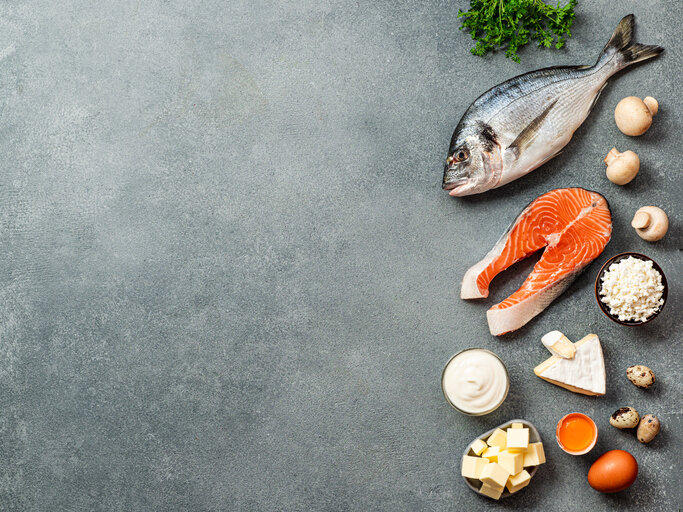Are you be under-consuming these key nutrients?
/Are you be under-consuming these key nutrients?
Let’s start with what many Americans over consume each day - excess sodium, unhealthy fats, and an abundance of overly sugary carbohydrates. This barrage of overabundance over time can be a major detriment to our health.
But what about nutrients we under consume also setting the stage for future health problems? Scientists with the National Health and Nutrition Examination Survey have identified five top nutrients many of us are lacking or what they refer to as “shortfall nutrients.”
Here’s a look at these five nutrients are and how simple dietary changes can prevent nutrient shortages:
1. Calcium – Calcium has the distinction of being the most abundant mineral in our body. It’s necessary for strong bones and teeth, lowers risk of osteoporosis, colon cancer and may aid in weight loss. Despite the mineral’s importance in the body, many people fall short of the 1,000 to 1,200 milligrams of calcium they need daily. In fact, the average woman consumes only slightly more than half of her daily requirement.
Top tips for boosting intake – Each day, include two to three servings of dairy (cow’s milk, cheese, cottage cheese, and yogurt) or calcium-fortified non-dairy beverages. Dark green leafy vegetables are also high in calcium. However, the human body absorbs more calcium from dairy foods than plant-based foods. Also, more calcium is absorbed from kale and broccoli than from spinach because they have less oxalate. Oxalate is an organic compound found in foods such as spinach that can bind with minerals like calcium carrying it on out the body, preventing some of it from being absorbed.
2. Fiber – Fiber has a multitude of important roles in our health. It prevents constipation, improves gut and heart health, and may lower the risk of colon cancer. Yet, few Americans are anywhere near meeting the Recommended Daily Allowance. The average person in the U.S. gets about 15-16 grams of fiber daily. Ideally men should strive for between 30-38 grams of fiber a day while women require between 25-30 grams per day.
Top tips for boosting intake – Begin by replacing white bread with 100% whole wheat bread. Have a fruit and/or vegetable at every meal and snack. Speaking of snacks, choose nuts and seeds for a fiber boost. Add dried or canned beans to soups, stews, taco meat, or to a pasta dish.
3. Iron – Are you feeling exhausted or get winded after climbing a flight of stairs? You may be lacking in iron, especially if you’re a woman. Almost 10% of women in the U.S. are iron deficient making iron the most common nutritional deficiency. Iron is an important component of hemoglobin, the substance in red blood cells that carries oxygen from the lungs to the rest of the body. Without sufficient iron, the body will not be able to make enough healthy oxygen-carrying red blood cells leading to iron deficiency anemia. Men require 8 milligrams of this mineral daily. Women, from ages 19-50, require 18 milligrams, and then after menopause, their daily requirement drops to 8 milligrams, the same as a man’s requirement.
Top tips for boosting intake – For anyone who is iron deficient, their healthcare provider will likely recommend taking an iron supplement; seek their advice when iron deficient. When it comes to food sources of iron, there are two dietary forms – heme iron and nonheme iron. Heme iron is found in animal foods that originally contained hemoglobin and is the type of iron the body absorbs the best. Heme is found in meat, poultry, and seafood. Nonheme iron is found in plant-based foods such as beans, spinach, and lentils. Nonheme iron from plants will not be absorbed as well as heme iron. To enhance absorption of nonheme iron, have a food rich in vitamin C, such as oranges, strawberries, or tomatoes at each meal.
4. Potassium - This mineral is vital for regulating blood pressure and muscle contractions. A good way to reduce high sodium intakes (which can increase blood pressure) is to include more potassium rich foods. Surveys show that Americans routinely consume less potassium than the recommended 4,700 milligrams both men and women require daily.
Top tips for boosting intake – Fortunately, there are easy ways to increase potassium intake each day. Start by adding more fruits and vegetables such as bananas, citrus, avocados, kiwi, and melons. Beans are also bountiful in this mineral. To preserve potassium content in cooked veggies, it’s best to steam or sauté foods such as spinach, kale, and turnip greens.
5. Vitamin D – It’s estimated that up to 40% of Americans may be deficient in vitamin D. Indeed, intake of this sunshine vitamin is low among both adults and children. Vitamin D is essential for bone health and research is now saying it may also protect against some cancers and other chronic diseases. The current recommendations for vitamin D is 600 International Units (IU) each day and 800 IU for people age 70 and older.
Top tips for boosting intake – Vitamin D is nicknamed the “sunshine vitamin” for a reason – when at least our hands and face are exposed to sunlight several times a week, it’s our best source for making this nutrient. Naturally rich food sources of vitamin D are not abundant but foods that do contain it include salmon, mackerel, sardines, tuna, egg yolks and cheese. Other good choices to choose from are also foods fortified with vitamin D, such as milk, orange juice, and some yogurts.
David B. Samadi, MD, Urologic Oncology Expert and Robotic Surgeon located at 485 Madison Avenue on the 21st floor, New York, NY – 212-365-5000. Follow Dr. Samadi at www.samadimd.com, www.prostatecancer911.com, and www.roboticoncology.com.

